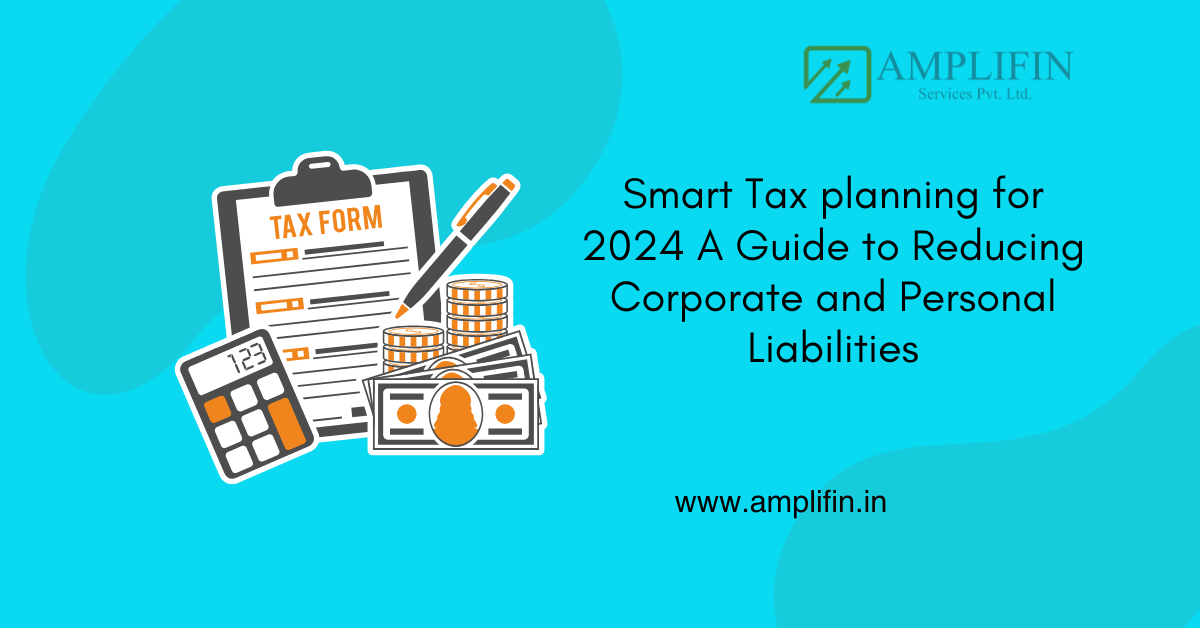Tax Planning Guide 2024: Smart Ways to Reduce Your Tax Bill
Understanding Tax Planning Fundamentals
- Tax planning involves legally structuring your financial activities to minimize tax liability and reduce their tax burden.
- Early planning is crucial for maximizing tax savings
- Different strategies apply based on tax brackets and total income to effectively reduce taxes.

Smart Tax-Saving Investment Options
Section 80C Investments (Up to ₹1.5 Lakh)
- Employee Provident Fund (EPF)
- Mandatory for salaried employees
- Tax-free interest earnings
- Long-term retirement benefits can be enhanced through effective tax saving instruments that reduce your current tax rate.
- Equity Linked Saving Schemes (ELSS)
- Lowest lock-in period (3 years) among 80C options makes it an attractive choice for taxpayers seeking flexible tax relief under section 80c of the income.
- Potential for capital appreciation can lead to increased capital gains tax if not managed properly.
- Tax-free returns under current laws can significantly impact your overall income tax strategy.
- Life Insurance Premiums
- Premium payments qualify for deduction under the income tax act, offering a way to save on taxes.
- Provides financial security with tax benefits
- Choose policies based on coverage needs
- National Pension System (NPS)
- Additional deduction under Section 80CCD(1B)
- Long-term retirement planning
- Tax benefits on contribution and withdrawal
Ways to Reduce Taxable Income
Business Owner Strategies
- Business Structure Optimization
- Choose a tax-efficient business structure to reduce their tax liabilities and improve overall profitability.
- Utilize available depreciation benefits
- Plan business expenses strategically
- Tax-Efficient Expense Management
- Document all eligible business expenses
- Maintain proper records for tax purposes
- Time major purchases for maximum tax advantage to effectively reduce taxes in the current tax year.
Employee Benefits and Deductions
- Flexible Spending Accounts can be used to reduce your taxable income and save on taxes effectively.
- Pre-tax contributions for medical expenses
- Reduces overall taxable income, thereby minimizing the taxpayer’s tax burden.
- Plan annual contributions carefully
- House Rent Allowance (HRA) can help reduce your taxable income during the tax year.
- Claim HRA benefits if paying rent
- Submit proper documentation
- Calculate eligible deduction amount
Long-Term Capital Gains Planning
- Strategic Investment Timing
- Hold investments for optimal tax treatment to minimize capital gains tax liabilities in the future and reduce taxes overall.
- Plan exits based on tax implications to minimize total tax and ensure financial efficiency.
- Consider indexation benefits
- Loss Harvesting
- Offset gains with losses
- Carry forward losses when applicable
- Time transactions for tax efficiency
Tax Credits and Special Deductions
Common Tax Credits
- Education-related credits can provide valuable tax relief for eligible taxpayers.
- Healthcare premium credits
- Clean energy initiatives credits
Additional Deductions
- Medical Insurance (Section 80D)
- Education Loan Interest (Section 80E) is a valuable deduction under section 80c of the income tax.
- Charitable Donations (Section 80G) can provide significant tax relief for taxpayers looking to reduce their income tax.
Smart Tax Planning Strategies for 2024
Regular Income Planning
- Salary Structuring
- Work with employer for tax-efficient structure
- Maximize tax-free allowances
- Plan investment declarations early
- Rental Income can significantly affect your total tax, so it’s important to report it accurately on your income tax returns.
- Claim standard deduction
- Plan property maintenance timing
- Document all eligible expenses to maximize your potential tax relief under the income tax act.
Year-End Tax Planning
- Review tax-saving investments
- Assess additional investment needs
- Plan for advance tax payments
- Gather documentation for returns
Financial Goals Integration
Balancing Tax Saving with Financial Goals
- Align investments with long-term objectives to ensure they are tax efficiently managed.
- Consider post-tax returns when evaluating different tax saving instruments for your portfolio.
- Don’t let tax savings drive all investment decisions
Regular Monitoring
- Track investment performance
- Review tax law changes to understand how they affect your income tax obligations.
- Adjust strategy as needed to align with the current tax regime and maximize benefits.
Filing Tax Returns
Documentation Requirements
- Investment proofs are essential for claiming tax deductions and minimizing your overall tax burden.
- Income statements
- Tax payment receipts are essential for verifying your income tax returns and ensuring compliance with tax regulations.
- Deduction-related documents
Common Mistakes to Avoid
- Last-minute planning
- Ignoring tax-saving opportunities
- Missing deadlines
- Incomplete documentation
Conclusion
Effective tax planning requires a balanced approach between saving taxes and meeting financial goals, particularly in the context of the current tax regime. Start early, stay organized, and regularly review your tax strategy to optimize your tax savings while ensuring compliance with tax laws and maximizing tax deduction opportunities.
Key Takeaways
- Begin tax planning at the start of the financial year
- Diversify tax-saving investments
- Maintain proper documentation to support your claims for tax deduction and ensure compliance with the income tax act.
- Consider both immediate and long-term tax implications
- Stay updated with tax law changes
